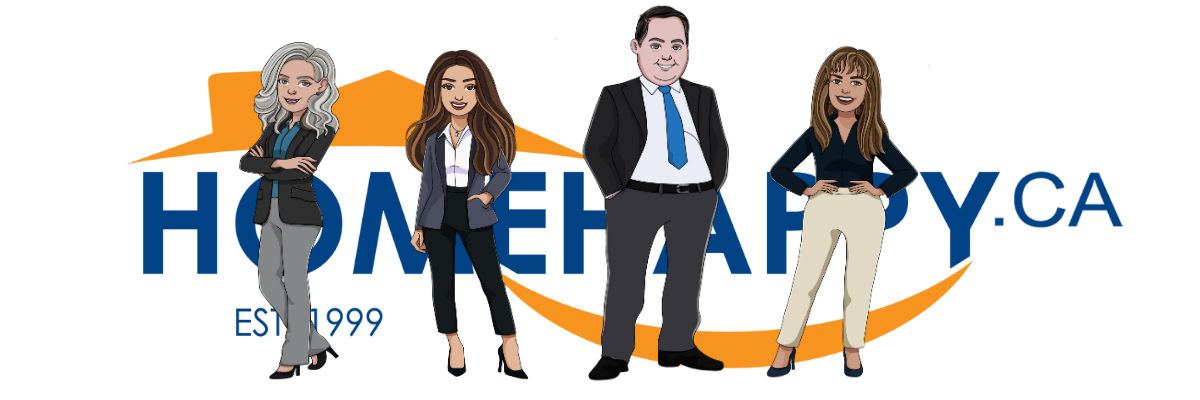5 Steps to Refinance Your Mortgage in Canada (And 5 Reasons You Should)

Imagine you’re going on a grand adventure. You’re off to seek treasure, finally invest in your future… with no compass, no direction, and no map. Basically, you don’t know where you’re going, just that you are.
It’s easy to get lost when you can’t chart a path.
Navigating the mortgage process alone can be a lot like sailing uncharted waters without the skills to do so. Sure, you can manage. But it’s much more risky and stressful.
Choose smooth sailing instead. We’ll guide you through the
mortgage basics, while you captain the ship. All the joyous adventure, way less painful hassle.
Owning a home means you build credit, grow equity, and are investing in your future. It also gives you a powerful tool you can use to consolidate debt, invest in property or other assets. This tool is refinancing. Let’s dive in:
Refinancing 101
Time to bust the myth that when you sign the dotted line, you must forever endure your mortgage at those rate and terms. This misconception is daunting, especially if your interest rates and terms were less than great.
Your solution? Refinancing. It’s a way for your mortgage to adapt to your needs, and can help your overall financial goals.
Replace your existing mortgage with a new one, and voila! You’ve refinanced. Your new loan pays the remaining debt of your old mortgage. Now it’s out with the old that didn’t serve you, and in with new terms, better rates, and possibly lower monthly payments, too.
5 Reasons To Consider Refinancing
- Lower Interest Rates: Take advantage of dips in the market. While there may be some fees and penalties to breaking your contract, the long-term savings with a lower rate can vastly outweigh initial cost.
- Lock in Rates: Many Canadians choose to refinance their mortgage to lock in at a lower rate and/or to avoid higher rates in the future.
- Change Terms: You can refinance to change your amortization period (how long it takes you to pay off your mortgage), or to change your mortgage to a fixed or variable product.
- Access Home Equity (cash): You build home equity as you pay your mortgage. To calculate yours, subtract the remaining amount of your mortgage from the total market price of your home. Your mortgage has a better interest rate than a personal loan, such as a line of credit. Borrowing from your home equity can be a smarter move, when you need cash for larger purchases like home renovations, making investments, or paying for your child’s education.
- Consolidate Debt: If you have multiple loans, varying payments, and high rates… you may be struggling to stay afloat. With enough equity, you can pay off high-interest debt by refinancing. Consolidating everything into one long-term loan (your new mortgage) makes your payments manageable. With one interest rate, and one payment, you can stop juggling the bills and start planning ahead.
Your Step-by-Step guide to refinance a mortgage
Overwhelm is for people without a plan, and we always have your back.
Let’s break down the process and keep it simple.
Step 1: Evaluate the market.
Refinancing is only beneficial under the right circumstances. It’s critical to evaluate your mortgage annually against current market rates in your area, so you know when the timing is right. We’re always happy to consult, and share insight so you understand when to act.
Step 2: Apply.
Much like getting your first mortgage, you need to start the refinance process with a mortgage loan application. Compile the necessary information, and submit for review. We’re great at streamlining this process and crossing T’s and dotting I’s, if you want help.
Step 3: Research Options.
Your financial situation and refinancing goals will determine the type of mortgage product you get. We can help ask the right questions and help you do your homework to carefully consider your options that will work for you now and in the future.
Step 4: Gather documents.
You need all relevant documents for a seamless submission process. We use an intuitive digital application process that tells you the exact documents required for your application. You can also upload them securely through our portal.
Step 5: Prepare yourself.
Even when the market indicates refinancing is your best option, the process may not be as simple as you expect. There’s a lot of factors involved, and fees and costs to consider. In order to save money, you need to plan ahead and look at all relevant information. While a lower interest rate or better terms can help you save money long term, you need to know your options to get the most benefit.
Wrapping it up
Refinancing can be overwhelmingly beneficial for many.
This year, 1 in 6 people will refinance, and many will choose the wrong financing for them. You’re considering refinancing to save money, not stress more.
We want your savings to outweigh any administrative costs, fees, and penalties. So let us crunch the numbers first (remember, our services are usually free!). There’s so much to evaluate, and a pros-and-cons list can get unwieldy fast without expert insight.
As you embark on your next home-buyer’s quest, we can guide you through hassle-free. Get a roadmap to your home-buying and financial goals, reach the reward at the end, and have the energy (and money) to enjoy it fully!
Be secure and happy in your decisions. Always get the best deal. Contact us today.
Share:
Recent Posts








